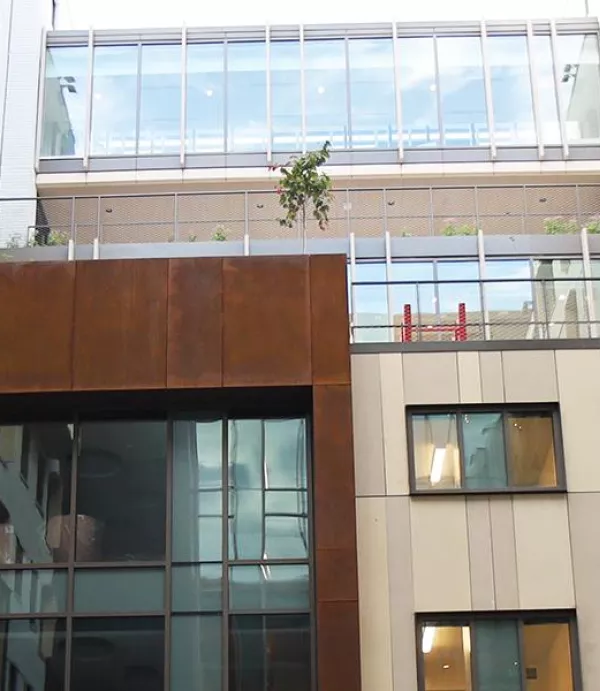Clark/Balfour Beatty Turns Over First Two Buildings of NGA Campus
July 30, 2009

FORT BELVOIR, Va. – The first two buildings of the National Geospatial-Intelligence Agency's (NGA) new headquarters at Fort Belvoir have been completed. Clark/Balfour Beatty - NCE, A Joint Venture constructed a 146,000 square-foot technology center and a 105,000 square-foot central utility plant, the first components of the NGA's New Campus East facility. On July 15, the two buildings were turned over to the NGA for interior fit-out.
"This is a great day for the NGA," said Vice Admiral Robert B. Murrett, Director of the NGA, at a July 10 ribbon cutting ceremony. New Campus East will be, "not just a home for the NGA, but a home for our collective mission." The new technology center has, he said, "the IT capacity to handle data storage and data management challenges." The $90 million steel-and-concrete technology center will be the NGA's hub of information technology.
In addition to the technology center and central utility plant, Clark/Balfour Beatty is constructing a 2.4 million square-foot office building to accommodate 8,500 employees. When complete the main office building will be the third-largest federal building in the Washington, D.C. area. Clark/Balfour Beatty is also constructing a six-level, 5,100-space parking garage and a 7,300 square-foot visitor control center, as well as making site improvements including building a vehicle bridge over the Accotink Creek. New Campus East's remaining components will be completed by September 2011 in accordance with the 2005 Base Realignment and Closure Act (BRAC).
The NGA is a Department of Defense combat support agency and a member of the national Intelligence Community. The agency's mission is to provide geospatial intelligence, which is the exploitation of satellite or airborne images, fused with other intelligence and geospatial information like mapping, charting, and geodesy, to help war fighters and national decision-makers visualize what they need to know.


